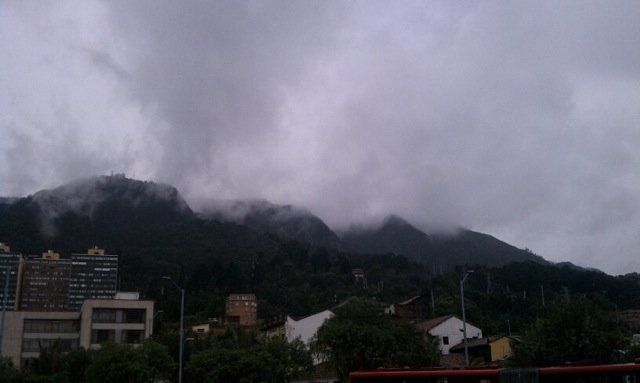When visiting a city of eight million, one probably expects the hustle, bustle and density of New York. It may also be fair to expect a lot of modern influence, but this is not the case in Bogota, Colombia. The nation's Distrito Federal may be the world's largest sprawling village with a unique colonial charm -- not just in the architecture but in the culture as well.
As Irving Farm Coffee Roasters' green coffee buyer I'm constantly travelling to Central and South America building relationships with local farmers and looking for the best green coffee beans. With such a rich coffee history, Colombia is one of my favorite trips. I visited for the first time last year and returned this summer. While most of my time is spent travelling the countryside and visiting coffee farms, Bogota is always a highlight of any visit to Colombia.
No trip to Bogota is complete without a visit to some of the more intrinsically touristy sites. Probably the most famous is Monserrate Sanctuary, which offers a scenic vista of the entire city. Other highlights include the Museo de Oro, which documents Colombia's history with gold, including exhibits of ceremonial golden armor, and the Botero Museum which houses the largest collection of paintings by Fernando Botero, Colombia's most famous painter whose work also hangs in galleries like New York's Metropolitan Museum of Art. Bolivar Square is another monument to Bogota's Colonial heritage, housing Colombia's Supreme Court, Congress and the pre-eminent Cathedral, one of the largest in South America.
That said, the best way to experience the true local culture may be a trip to Andres' Carne de Res, a five-story combination restaurant and nightclub that is packed with locals on weekends. Every detail of Andres' is calculated to ensure that you will have FUN, first and foremost their menu, a 60-page illustrated tome of Colombian cuisine heavily weighted towards steak and traditional Colombian fare. Beyond the food, there are dance floors on each level and bands who will come around to your table to play, sing, dance and litter your table with paper hearts. At Andres, the party rages all night.
Staying in the Los Rosales area could not have offered a better respite between trips out into the countryside in search of this countries famous coffee crops. The upscale area is quiet, yet replete with restaurants of international caliber.
Notably, I ate at Casa Vieja for lunch, a fine dining interpretation of Colombian "platos tipicos" or typical plates. My meal of pinto beans, rice, fried ripe plantain, ground beef and chicharron was impeccable -- hearty, rich and satisfying yet worthy of the sophisticated setting of white tablecloth and formal service. My companions dined on multiple versions of Sancocho de Gallina and Ajiaco, a traditional chicken soup. Los Rosales was also home to a thriving nightlife, with multiple bars housing extensive wine lists, not to mention an American style brew-pub with craft beers and bar snacks.
My favorite place in Bogota is a hidden gem that is underappreciated by the locals. Amor Perfecto Cafe is a tiny space with a small roaster inside. The owner sources small lots of some of Colombia's best coffees, roasts them on premises and brews them meticulously. He gushes with passion, yet the local culture is not used to the premium, export grade coffees he purveys, drinking instead the cheap coffees which are not exportable. A visit to Amor Perfecto always gets me excited about the promise of Colombian coffee and makes me look forward to visiting all the farms along the countryside.
Traveling in the countryside of Colombia, especially Huila, is a completely different adventure. The startling landscape is as beautiful visually as it is harsh physically. Two-lane roads negotiate mountains, ridges and river crossings, some of which are temporary bridges because the real ones have been washed out by floods. Locals are friendly but cautious, and Spanish is a must.
The landscape is dotted by small towns with a traditional square supporting vibrant commerce that always seems to include a church, bakery, ice cream shop and local bar often found right in the square. Coffee is everywhere, being an entrenched part of the culture and a common form of income for many -- however I've found that the ubiquity of coffee hinders the perception that it can be special. Often coffee can be sold on the side of the road to any number of local brokers and as a result loses its identity. That said, there are always the rare gems waiting to be found, just like Amor Perfecto in Bogota, which will hit Irving Farms cafés at the end of the year.
